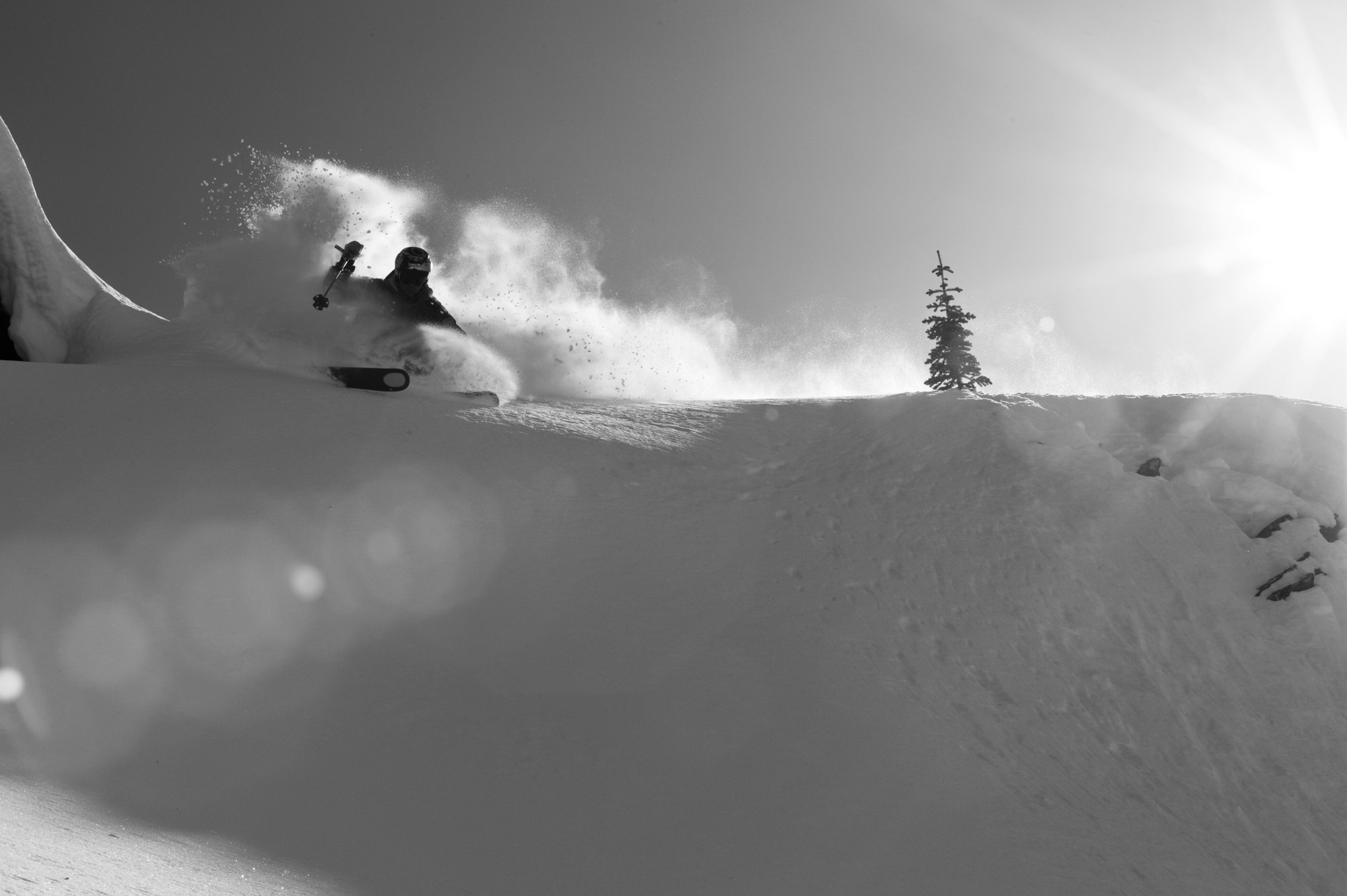The amount of people embarking on human-powered ski missions in the backcountry has skyrocketed over the past decade—due in large part to recent gear innovations and internet intel, making backcountry travel more accessible to outdoor recreation fanatics. While a large number of skiers are heading for tours in the backcountry, many of them are inexperienced when it comes to the art of skinning uphill. To boost your touring prowess, because, hey, no one’s perfect, we’ve pinged steep skiing legend Chris Davenport to school you on some very useful skinning techniques.
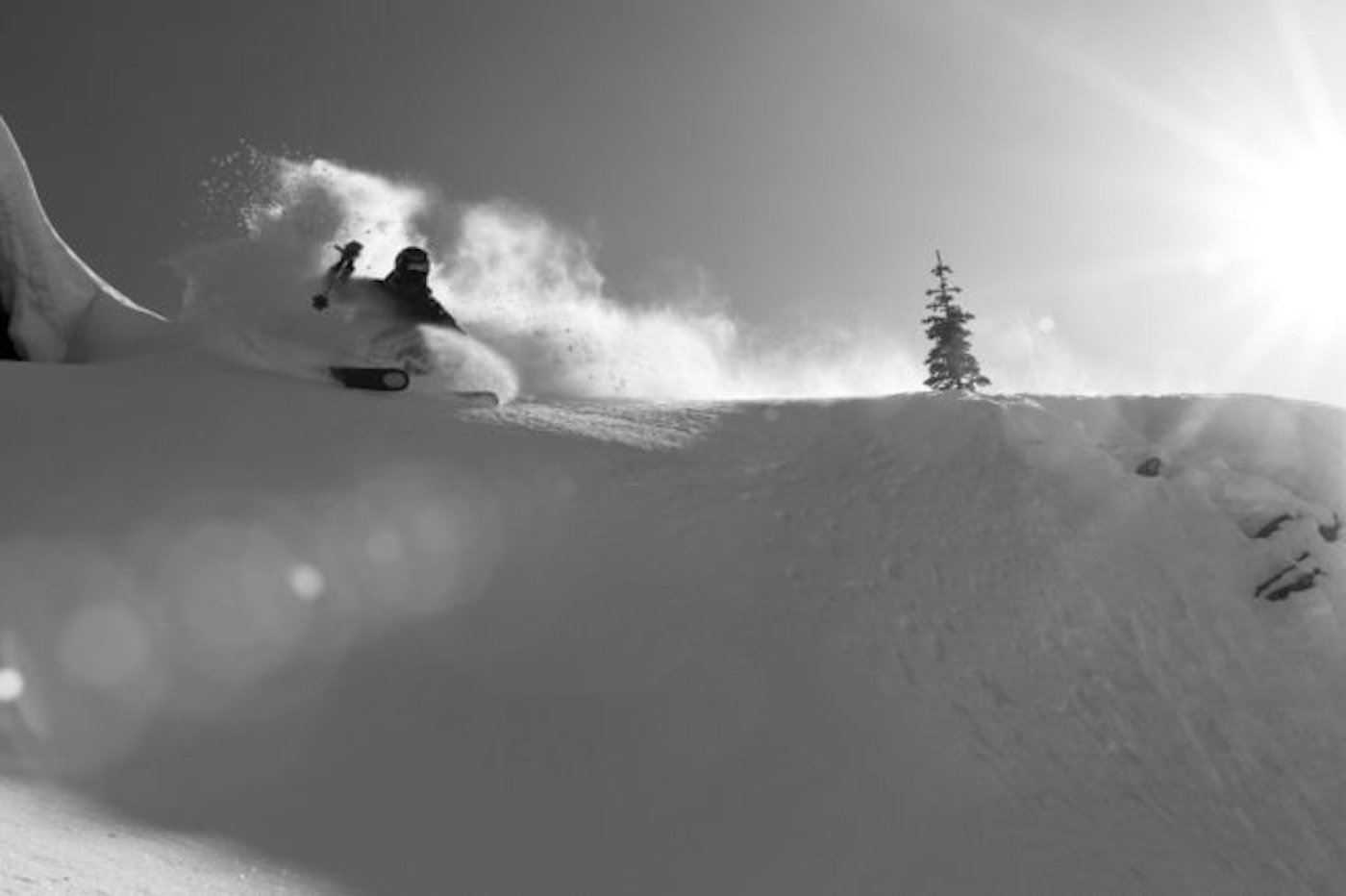
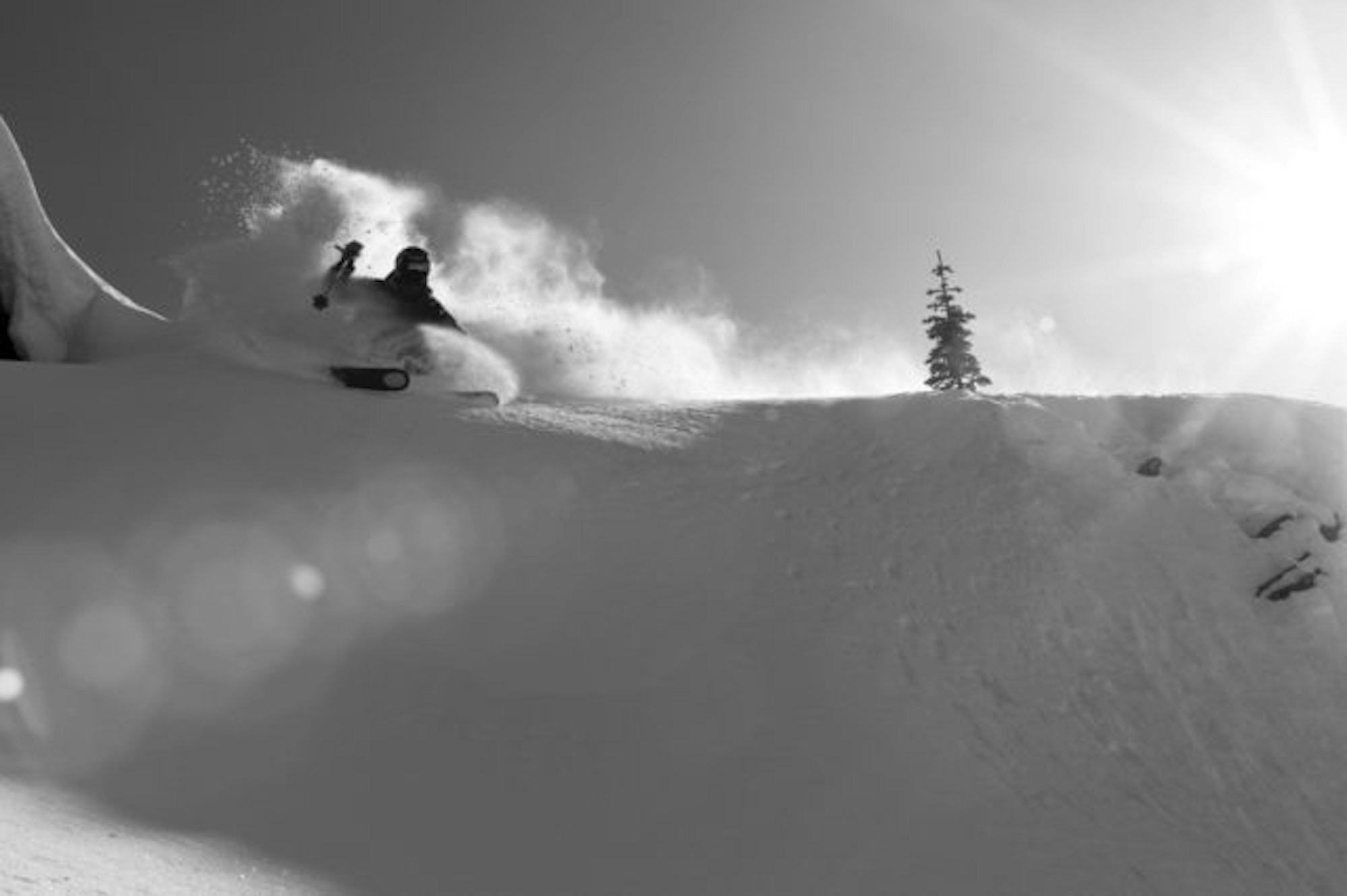
by Chris Davenport
I love to skin. Moving uphill through the mountains on skis is an art form with its own rules and techniques. I look at skinning as a workout as well as an adventure—a time where I can think, stretch my legs and open up my lungs to the mountain air. Whether you are skinning through fresh powder or on frozen spring corn, efficiency and technique play an important role in moving up the mountain while using the least amount of energy possible. With that in mind here are ten tips to help you improve your uphill experience.
Dav’s Touring Tips:
1. Don’t lift your skis off the snow as you move forward
Leave that weight on the ground. As you slide your skins across the snow be aware of the weight you are lifting up. In one mile you might take 5,000 steps and if on each of those steps you lift your skis, well, that is a ton of weight your poor legs are lifting. Leave that weight on the snow and shuffle the skis forward using your hips and hip flexors. Which leads me to tip number two…
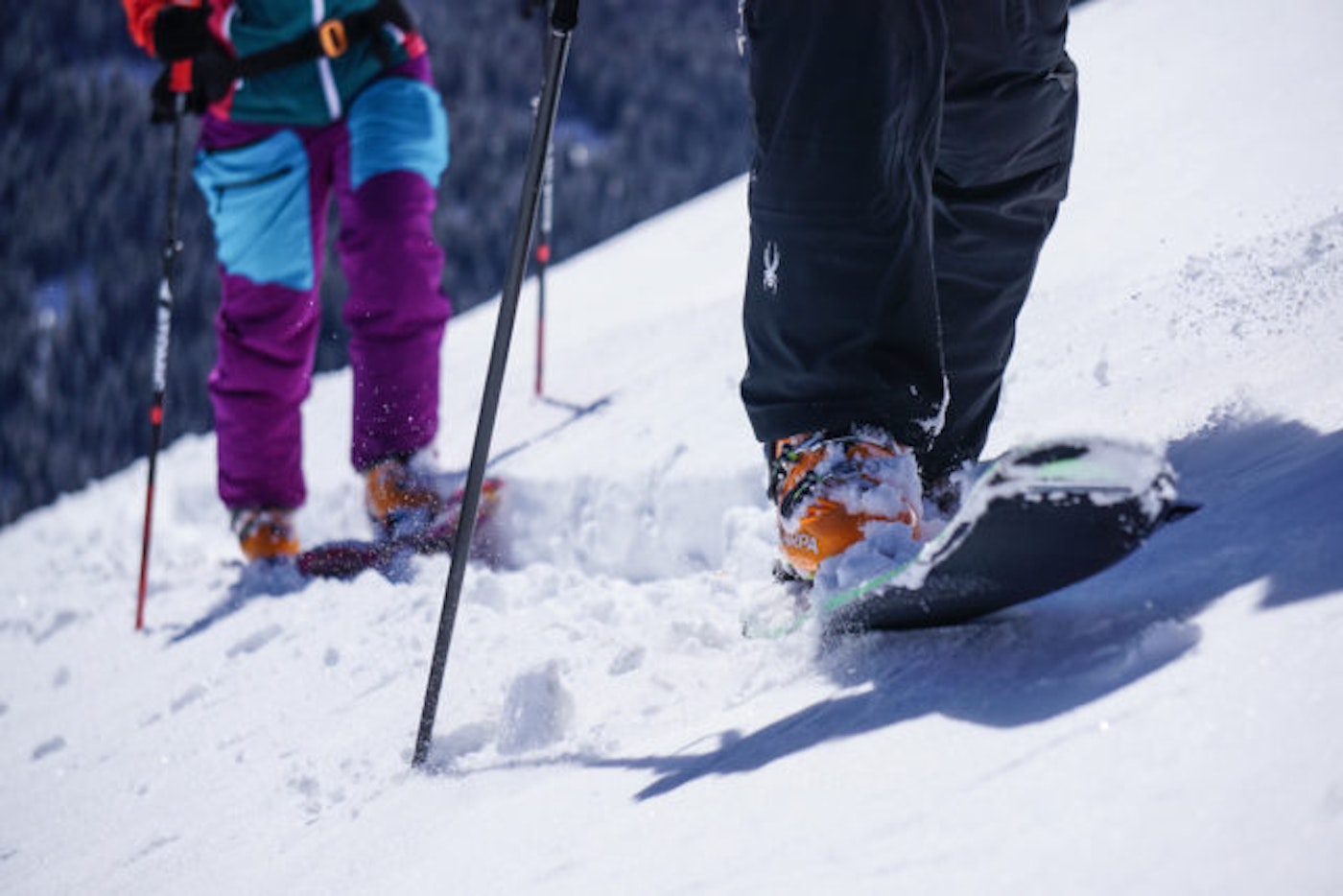
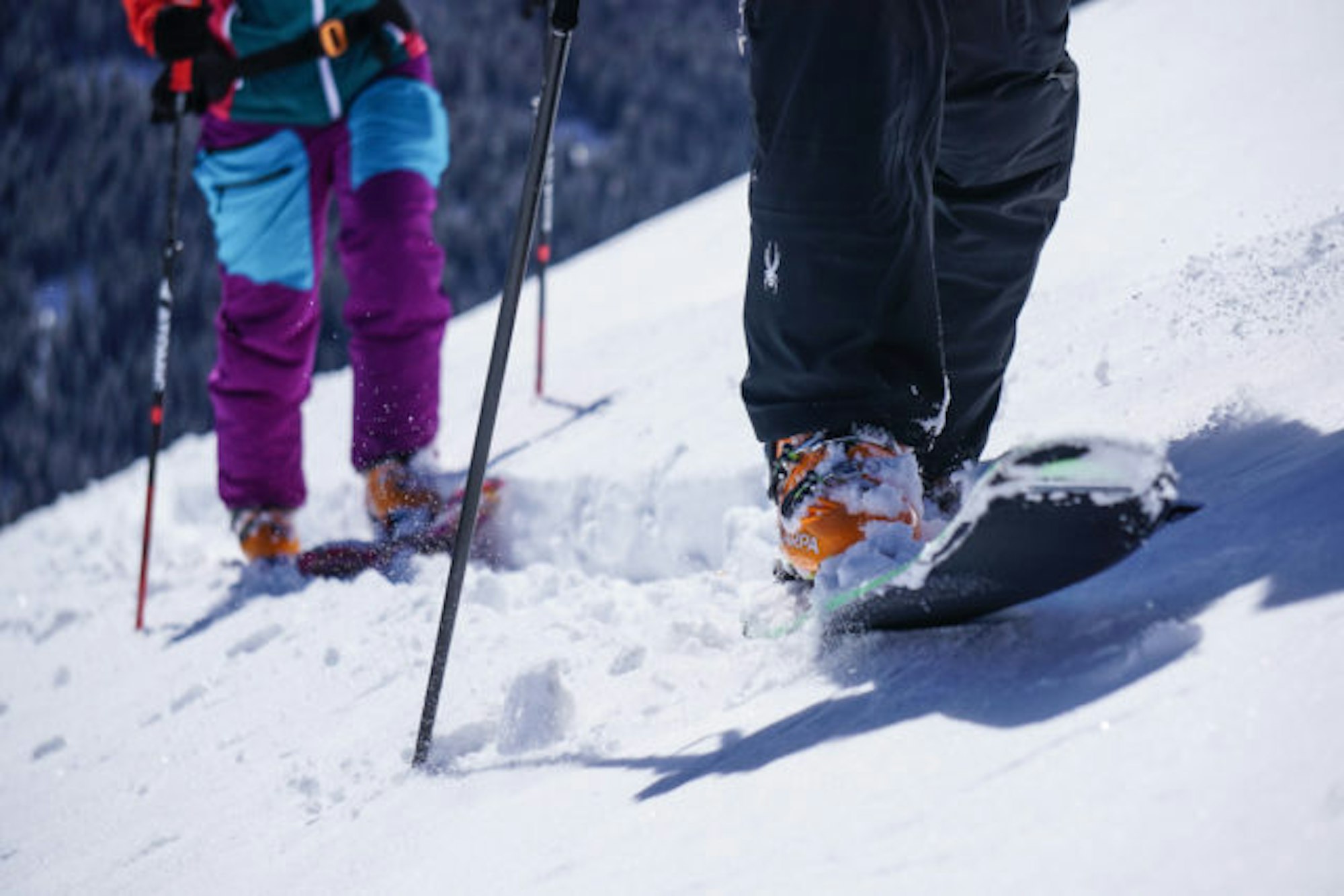
2. Use your hips
Efficient skinning technique means getting the longest gain you can with each step. If your hips are square and locked you limit the range of movement you can put into each stride. By loosening up your hips and moving them into each stride you will gain an inch or two with each step and that will add up over time.
3. Remember to breath
Just like when running or biking, getting your breathing in sync with your steps makes your body happy. If I’m going hard I might inhale and exhale with each stride. If I’m on a more mellow pace I might inhale with one stride and exhale with the next. Your engine loves a good rhythm, so settle into one and sustain it. If you have to stop and catch your breath every 20 or 100 steps you’re most likely going too hard. When I’m guiding, I like to tell my clients, “go slow to go fast,” because a steady pace beats an erratic one any day.
4. Don’t use your arms
Well, you can use them, but try and put as little weight on your arms as possible. When I skin I am aware of how I use my triceps and forearms and try to only use them for balance, not to propel myself forward. When the skin track is steep people tend to use their arms too much. Remember your legs are way stronger than your arms, so put 90 percent of your weight on your legs. On a long, flat section in the backcountry I will sometimes just hold my poles horizontally practicing my balance by only skinning with my legs.
5. Keep your upper body upright
Don’t hunch over the front of your skis. Not only will this force you to use your arms but you will also lose grip on the snow and potentially slip. This is especially true on slippery spring tracks when the going gets steeper. By keeping your chest upright you will improve your grip as well as your striding efficiency.
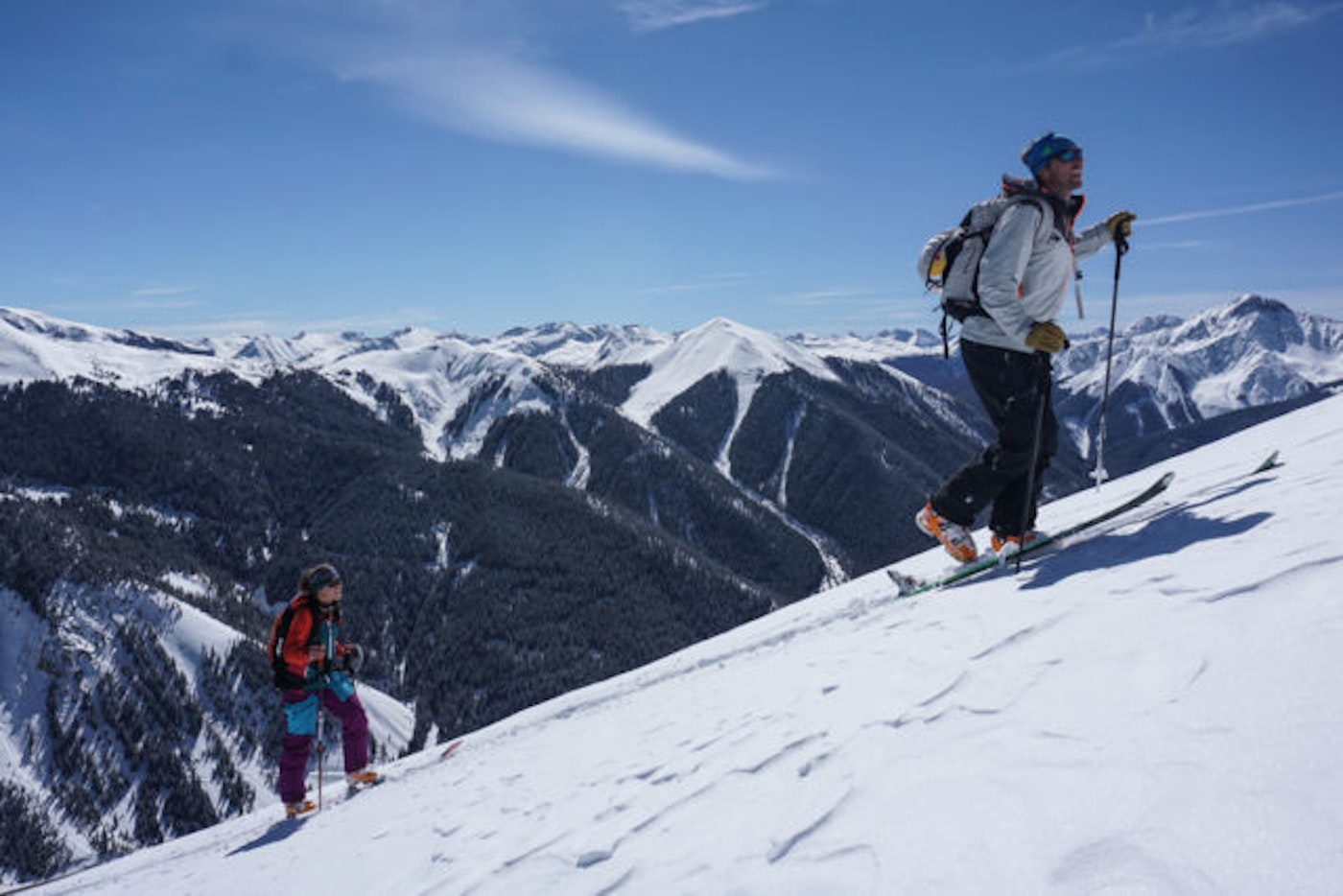
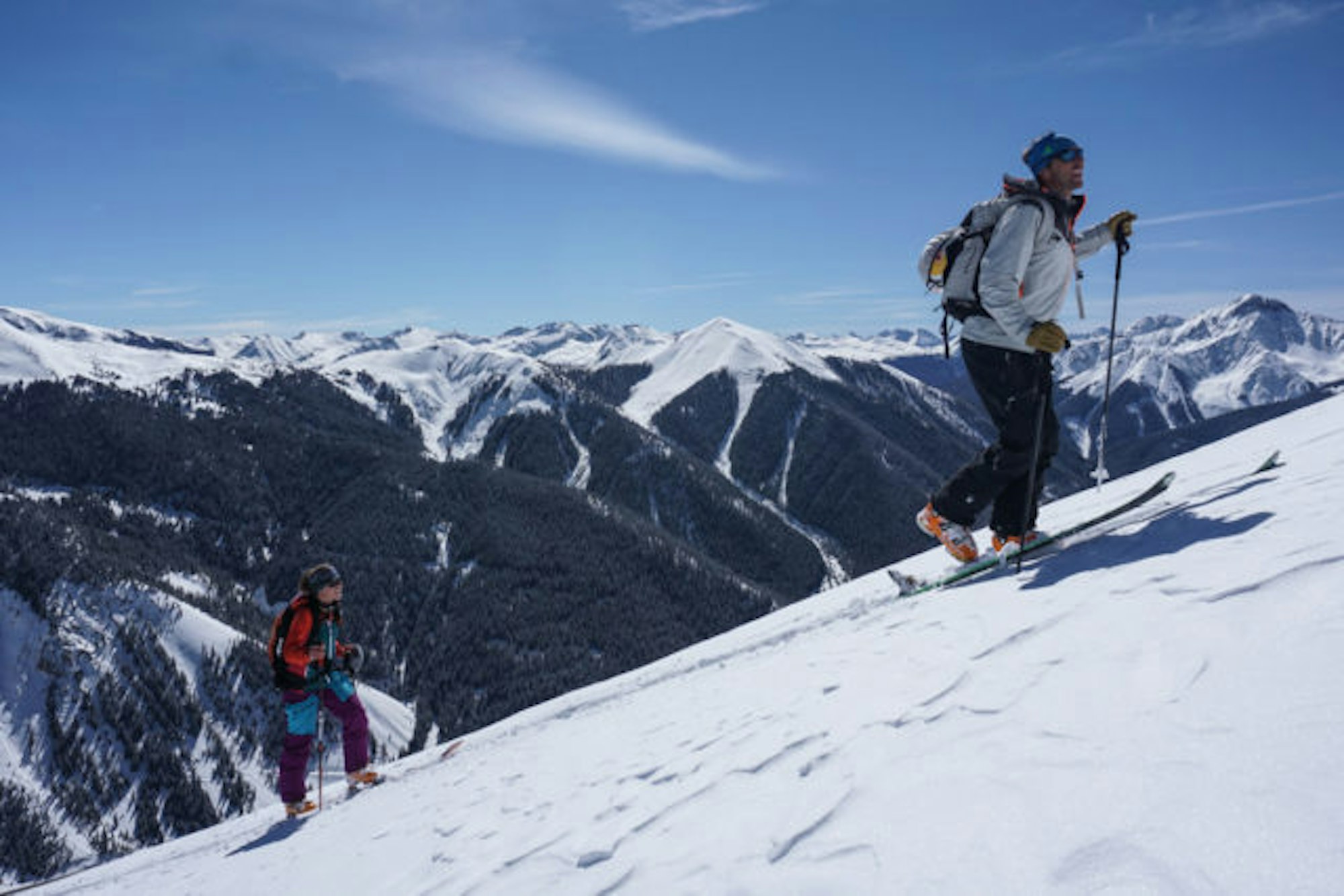
6. See the line
As I’m skinning I’m always thinking many moves ahead, trying to envision a beautiful skin-track up the mountain. I study the terrain ahead of me and think about the safest and easiest way to ascend. I look to avoid terrain traps, unsupported slopes above me and potential dead ends. Take your time and imagine where your beautiful skin track will go. Your friends that you left in your wake will appreciate it.
7. Keep the skin track on a mellow grade
Beginner skinners tend to want to go straight uphill; or if they are zig-zagging tend to make the skin track too steep. Great guides always set a mellow skin track that minimizes the amount of energy necessary to climb. I rarely use my highest heel lifters, instead opting to stay in my middle heel-lift setting and taking a more mellow approach up the mountain. You can move faster on a lower-angle skin track. One exception to this rule is if you are breaking trail in deep snow. In this case the tips of your skis lack enough pressure to sink in to the snow and create a flat angle, so you will want to use your high-lifts.
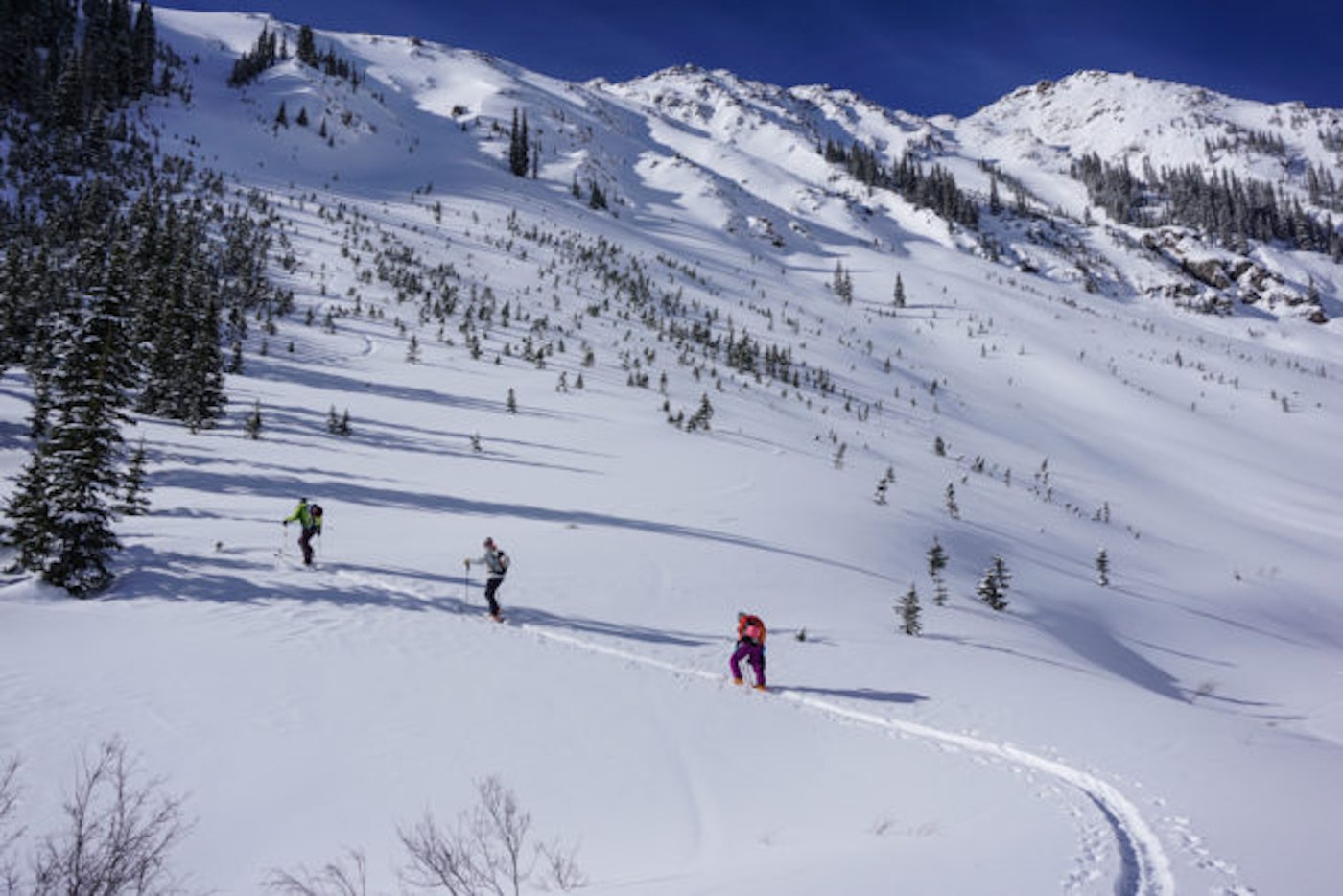
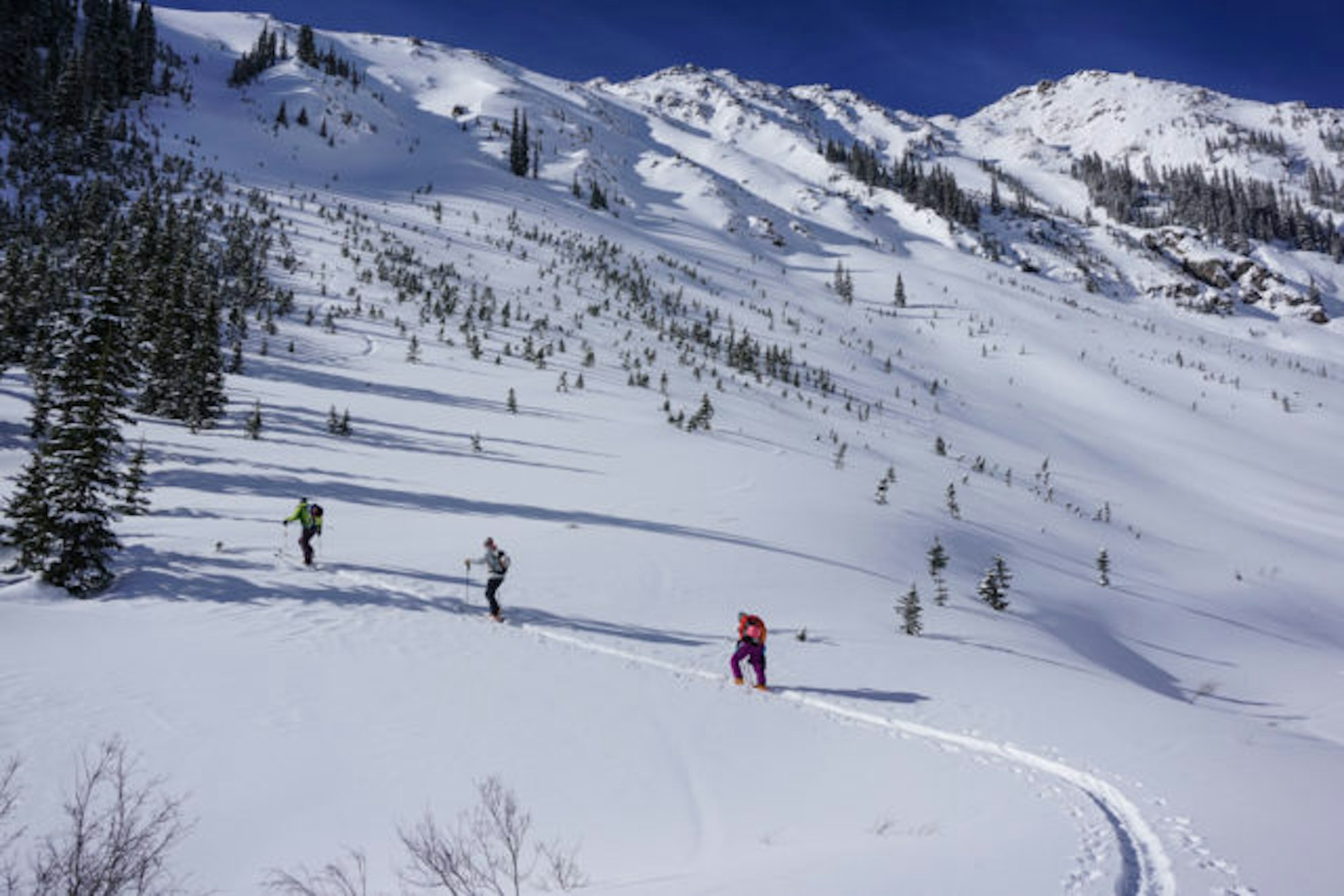
8. Don’t draft
While it might be OK to be right on someone’s wheel in road cycling it’s not cool on the skin track. Your buddy is busting their ass ahead of you to create a great track, so give them some room and never, never step on their tails. That’s especially true for you canines out there! Give your friend a few ski lengths and spread out much, much more if you’re in avalanche terrain.
9. Carry the right tools
I always carry skin wax and a scraper just in case the snow is transitioning and getting sticky. I’ve seen many a backcountry skier come to a frustrated crawl because their skins were all glopped up with sticky, wet snow. Try and keep your skins dry and don’t be afraid to use that skin wax.
10. Manage your temperature
When I skin I try and find a pace where I’m not sweating profusely and soaking my layers. Heat is caloric output and you want to be efficient with your output. While your engine is sure to heat up as you skin, managing your heat output by removing layers will minimize the amount of energy you are expending. For me I know that my engine will heat up about ten minutes from leaving the trailhead, so I plan ahead and remove layers before I start.
Associated Gear:
Scarpa Freedom RS 130:
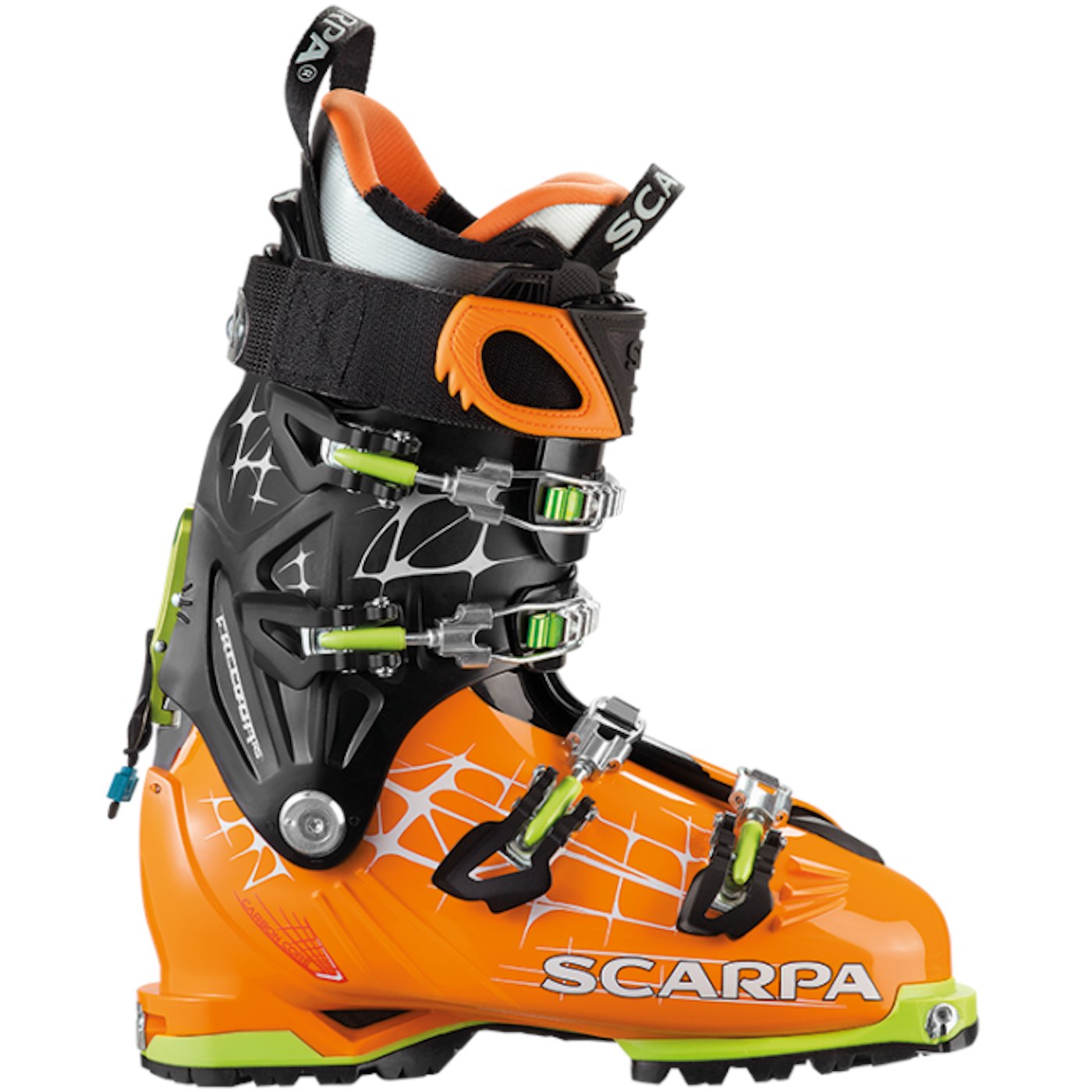
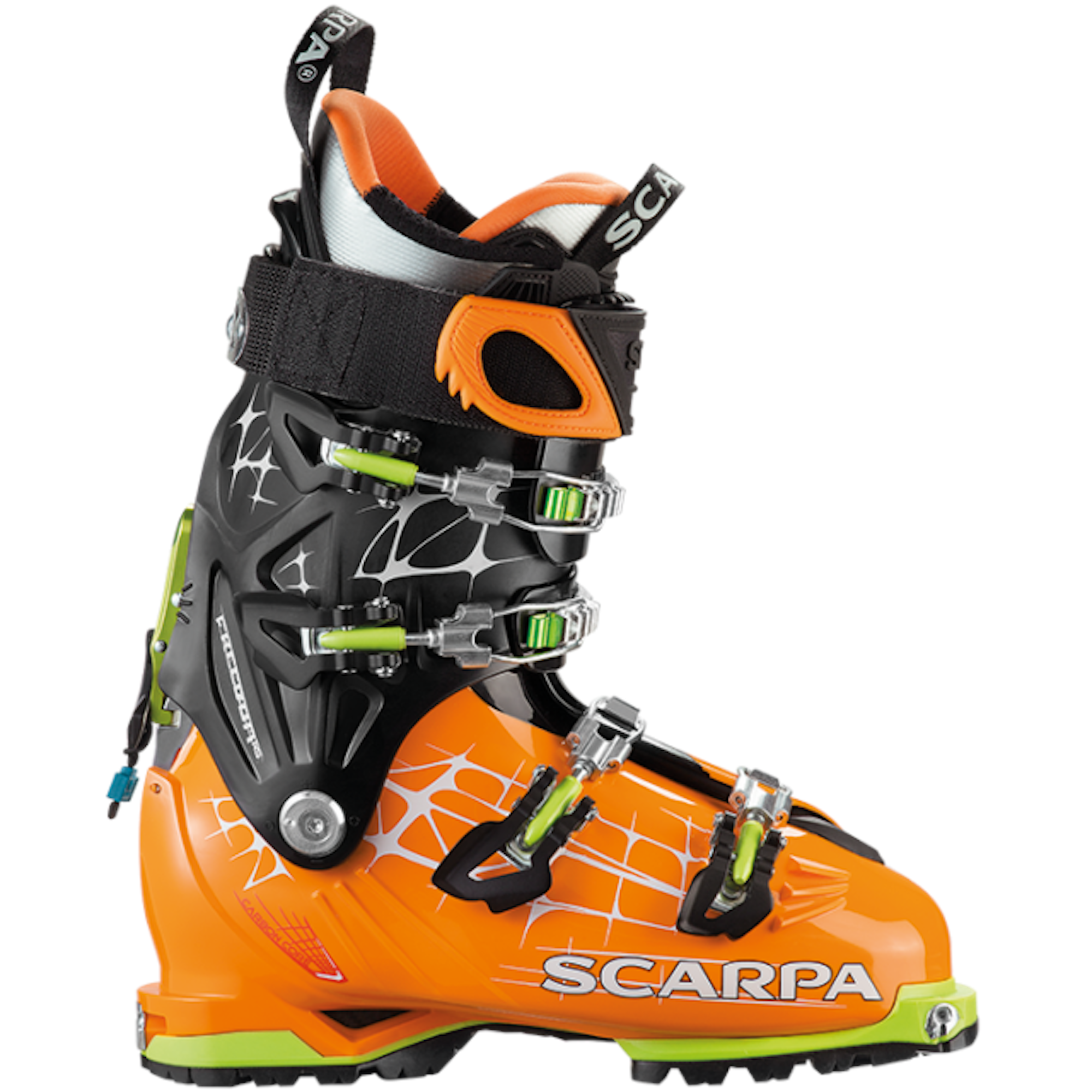
The Freedom RS 130 leads the charge of Scarpa’s highly-praised five-boot Freedom series. Its 130 flex and molding of the lower boot around a carbon fiber frame provide ultimate stiffness, ensuring these bad boys will hold up on the gnarliest of off-piste descents. Its frictionless walk mode mechanism provides a 25-degree range of motion and the boot weighs in at a manageable 1,990 gams per boot (size 27) for effortless uphill travel and worry-free downhill performance.
[su_button url=”https://www.scarpa.com/freedom-rs” target=”blank” style=”flat” background=”#0e5589″ size=”5″ center=”yes” radius=”5″]Find Out More[/su_button]

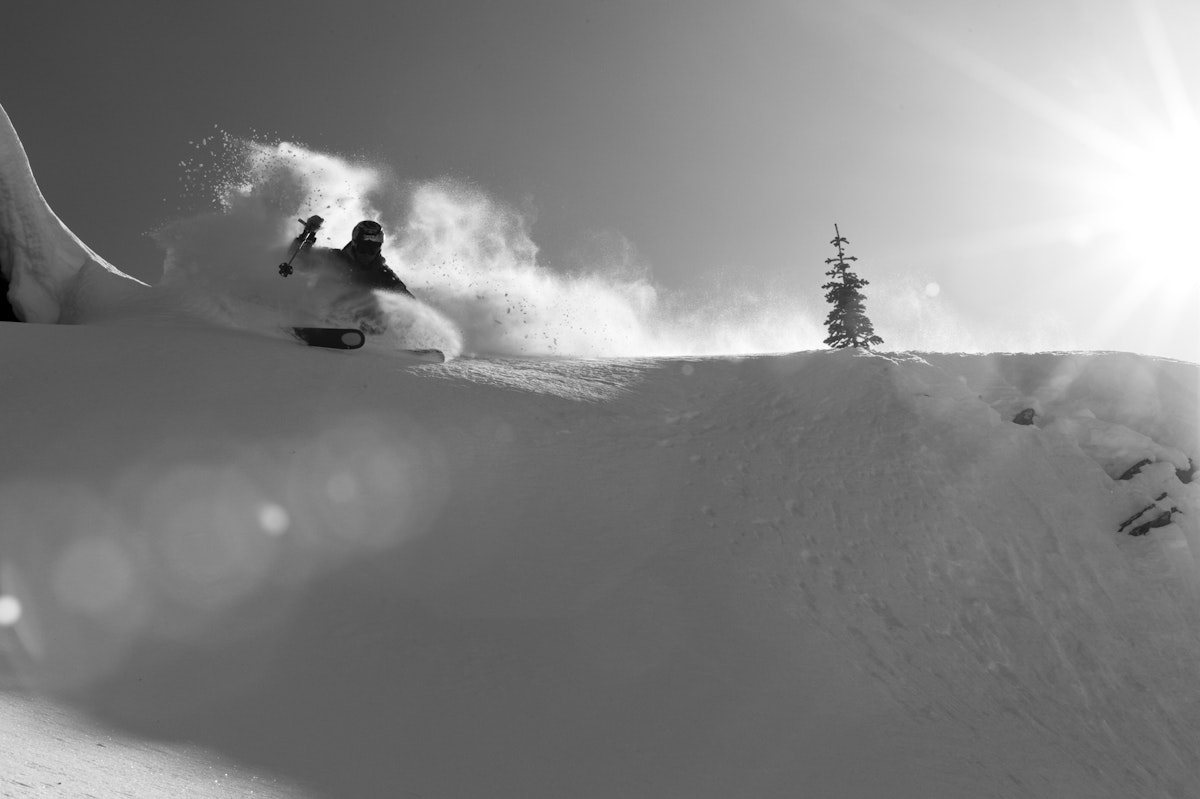


![[GIVEAWAY] Win a Head-to-Toe Ski Setup from IFSA](https://www.datocms-assets.com/163516/1765920344-ifsa.jpg?w=200&h=200&fit=crop)

![[GIVEAWAY] Win a Legendary Ski Trip with Icelantic's Road to the Rocks](https://www.datocms-assets.com/163516/1765233064-r2r26_freeskier_leaderboard1.jpg?auto=format&w=400&h=300&fit=crop&crop=faces,entropy)
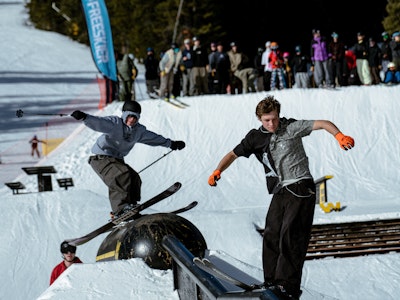




![[GIVEAWAY] Win a Head-to-Toe Ski Setup from IFSA](https://www.datocms-assets.com/163516/1765920344-ifsa.jpg?auto=format&w=400&h=300&fit=crop&crop=faces,entropy)

